What does this mean? Storage system verify or repair (-69716)
This happened when I tried to update the operating system to Monterey.
Storage system verify or repair (-69716). Now I can't get into the computer. What do I need to do?
MacBook Air
This happened when I tried to update the operating system to Monterey.
Storage system verify or repair (-69716). Now I can't get into the computer. What do I need to do?
MacBook Air
Hi most9t,
Thanks for contacting Apple Support Communities!
We understand that you're seeing an alert when you attempt to update the macOS.
There may be an issue with the disk that's causing this alert. If you have any external devices connected to your Mac, you may consider disconnecting them then you can run First Aid while in macOS Recovery to repair the disk as outlined here: How to repair a Mac disk with Disk Utility
"Open Disk Utility
In general, you can just open Disk Utility from the Utilities folder of your Applications folder. However, if your Mac doesn't start up all the way, or you want to repair the disk your Mac starts up from, open Disk Utility from macOS Recovery:
2. You may be asked to select a user you know the password for. Select the user, then click Next and enter their administrator password.
3. From the utilities window in macOS Recovery, select Disk Utility and click Continue.
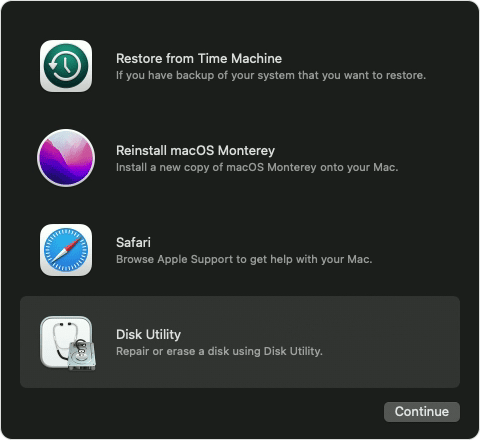
Select your disk in Disk Utility
Choose View > Show All Devices (if available) from the menu bar or toolbar in Disk Utility.
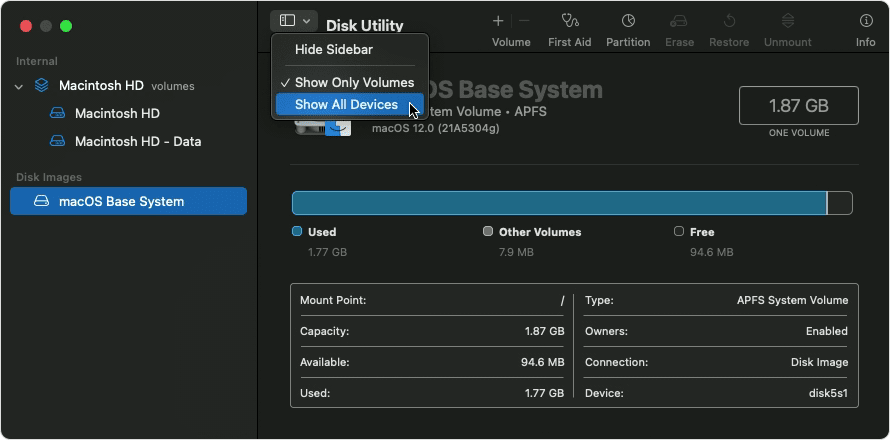
The sidebar in Disk Utility should now show each available disk or other storage device, beginning with your startup disk. And beneath each disk you should see any containers and volumes on that disk. Don't see your disk?
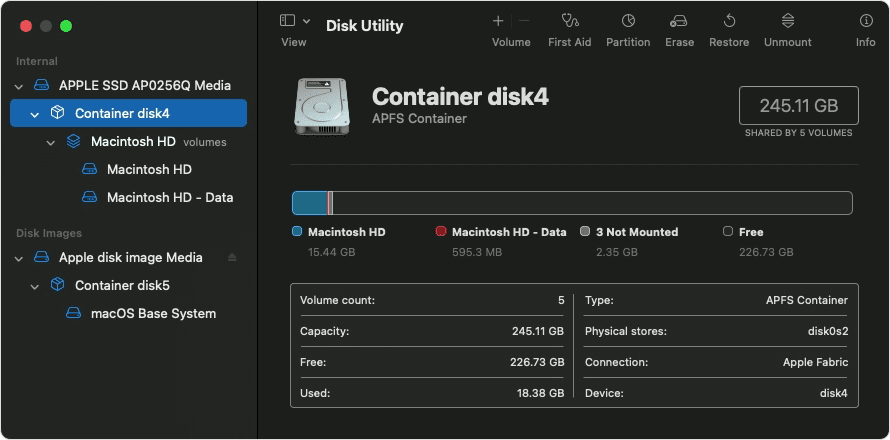
In this example, the startup disk (APPLE SSD) has one container and two volumes (Macintosh HD, Macintosh HD - Data). Your disk might not have a container, and it might have a different number of volumes.
Repair volumes, then containers, then disks
For each disk that you're repairing, start by selecting the last volume on that disk, then click the First Aid button ![]() or tab.
or tab.
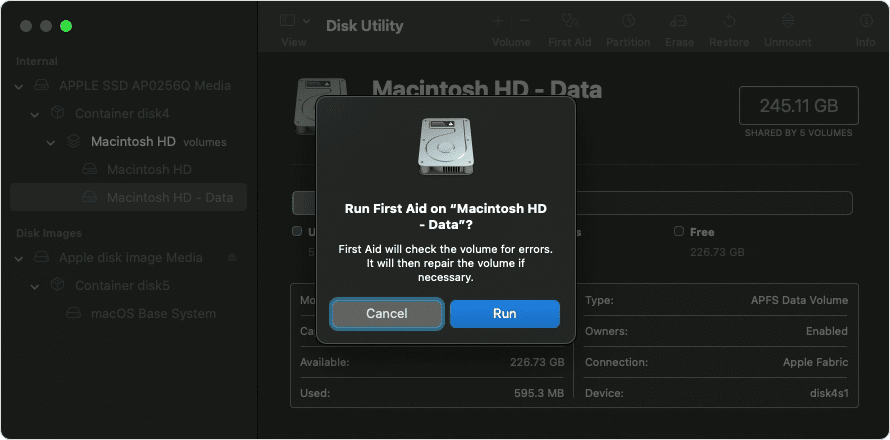
In this example, the last volume on the disk is Macintosh HD - Data.
Click Run to begin checking the selected volume for errors.
After Disk Utility is done checking the volume, select the next item above it in the sidebar, then run First Aid again. Keep moving up the list, running First Aid for each volume on the disk, then each container on the disk, then finally the disk itself.
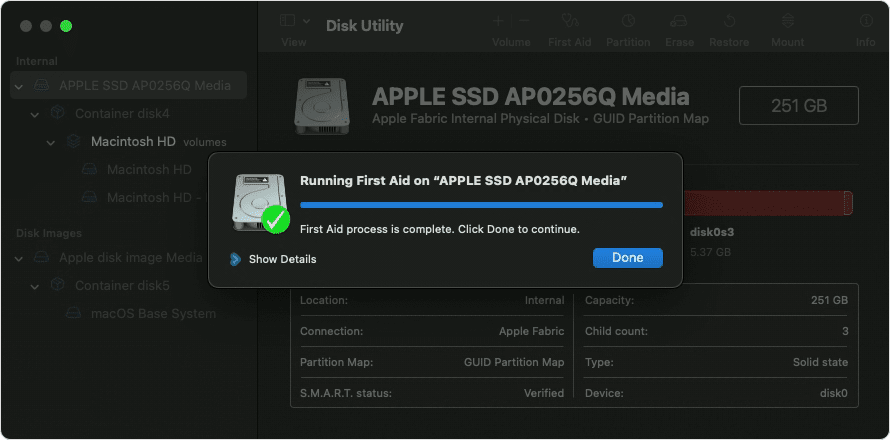
The order of repair in this example was Macintosh HD - Data, then Macintosh HD, then Container disk4, then APPLE SSD.
When done, quit Disk Utility. If you used Disk Utility from macOS Recovery, you can now restart your Mac: choose Apple menu > Restart."
If you need help to start in macOS Recovery, this article will show you how to do so: Use macOS Recovery on an Intel-based Mac
"Start up your Intel-based Mac in macOS Recovery
3. If you see a lock, enter the password for your Mac.
4. If you have multiple volumes on your disk, select the volume you want to recover, then click Next.
5. If requested, choose an administrator account, click Next, enter the password for the account, then click Continue.
When the Recovery app appears in the menu bar, you can choose any of the available options in the window or the menu bar."
We hope this helps you.
Take care!
What does this mean? Storage system verify or repair (-69716)